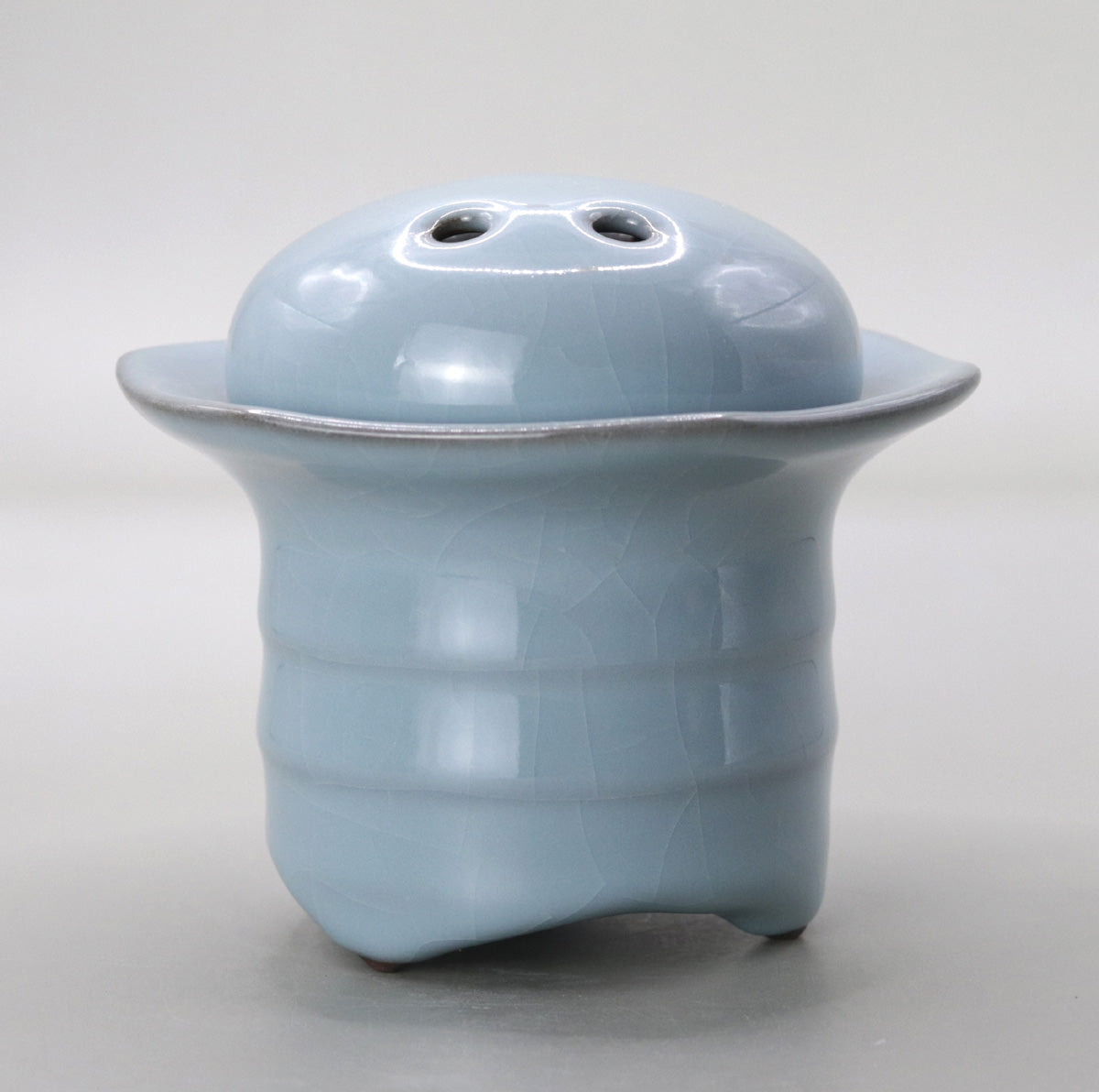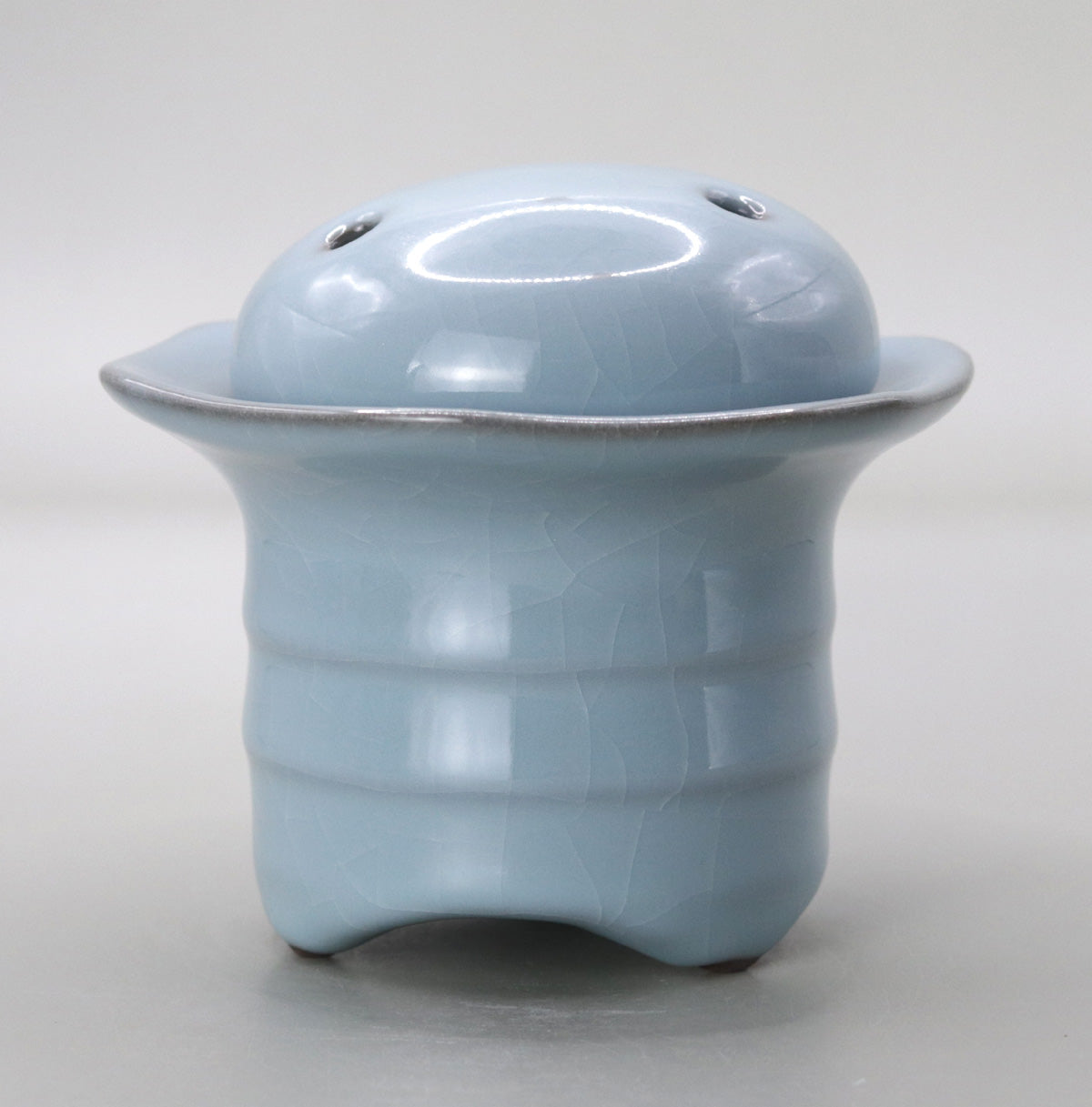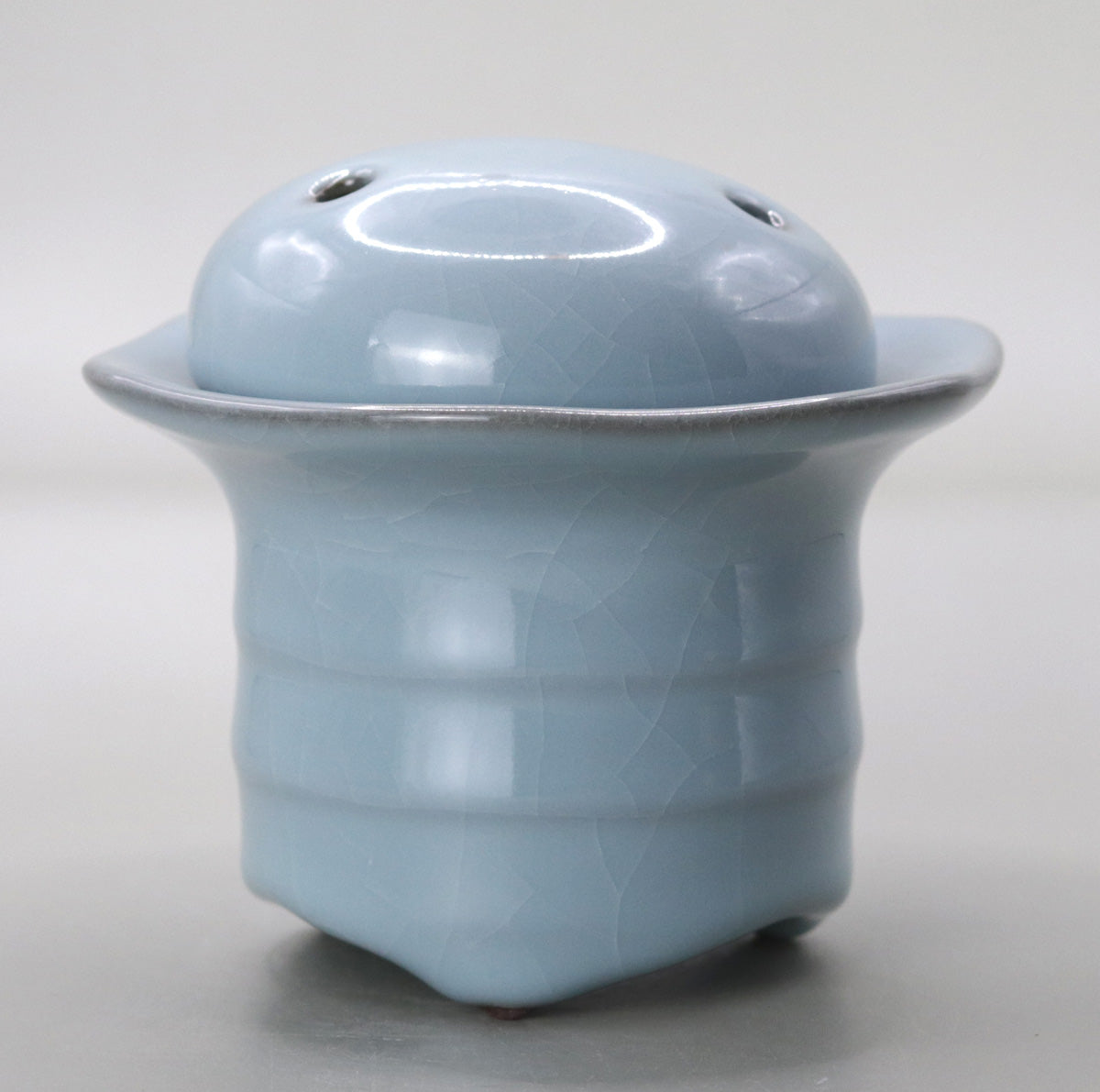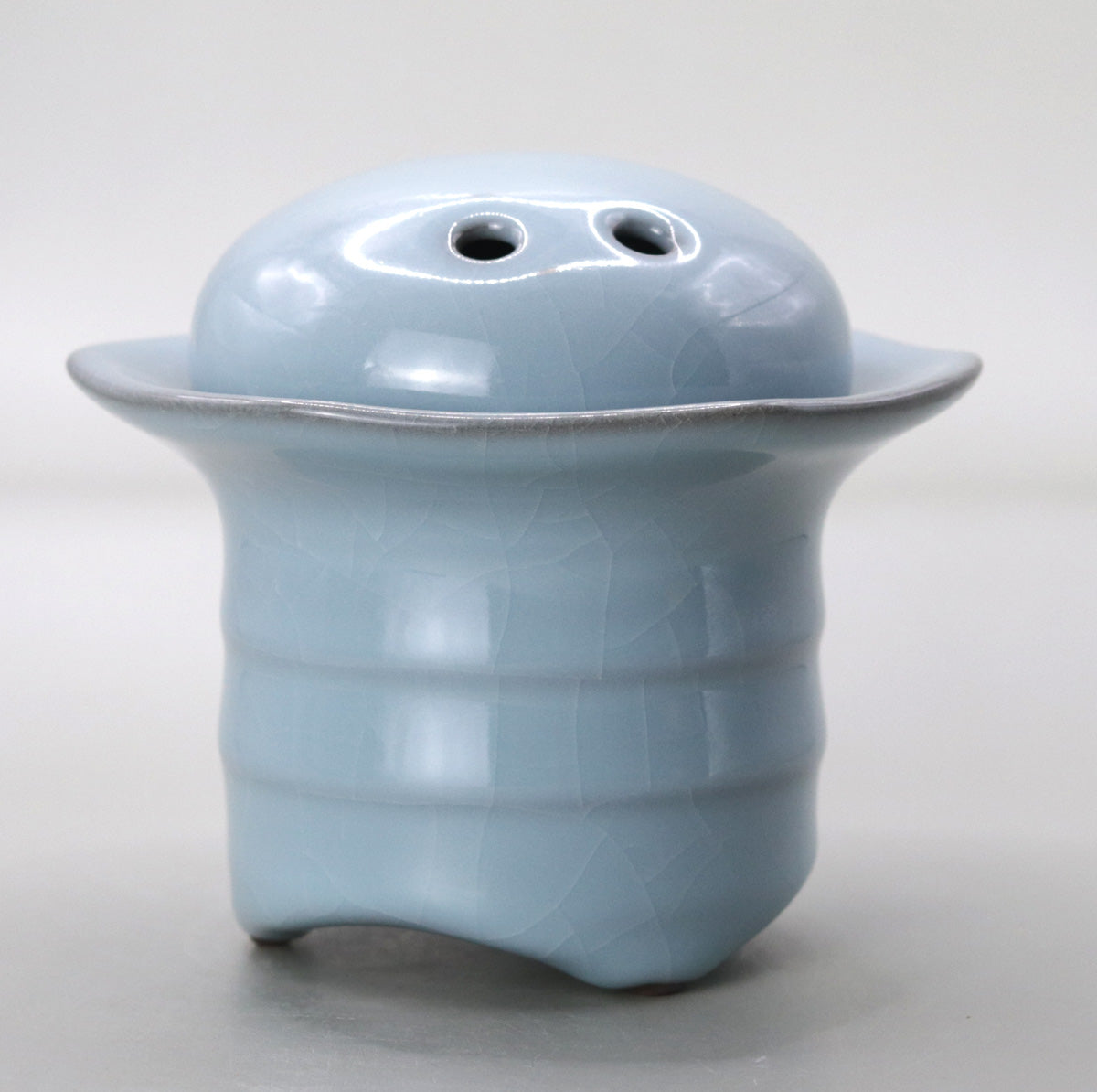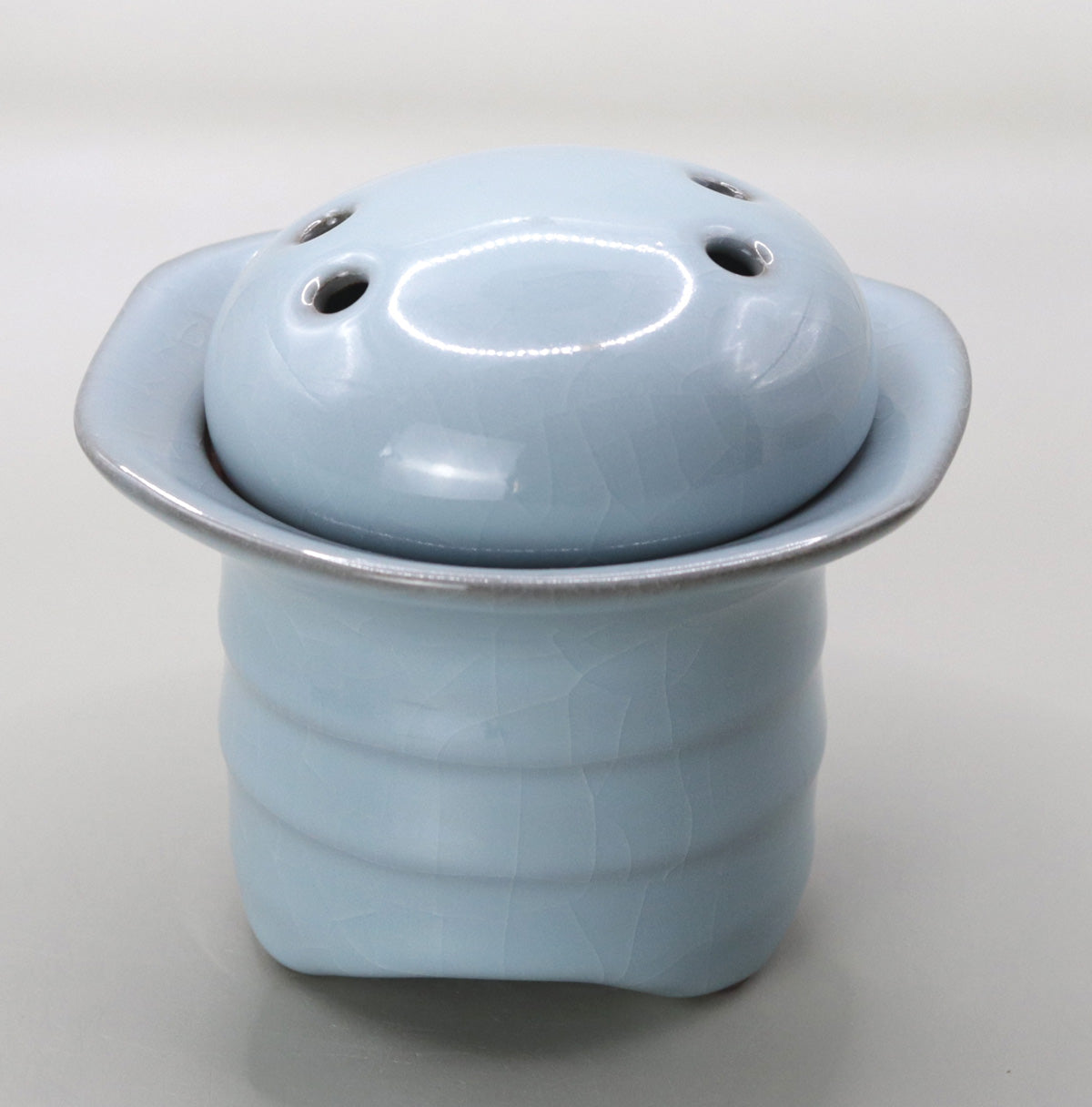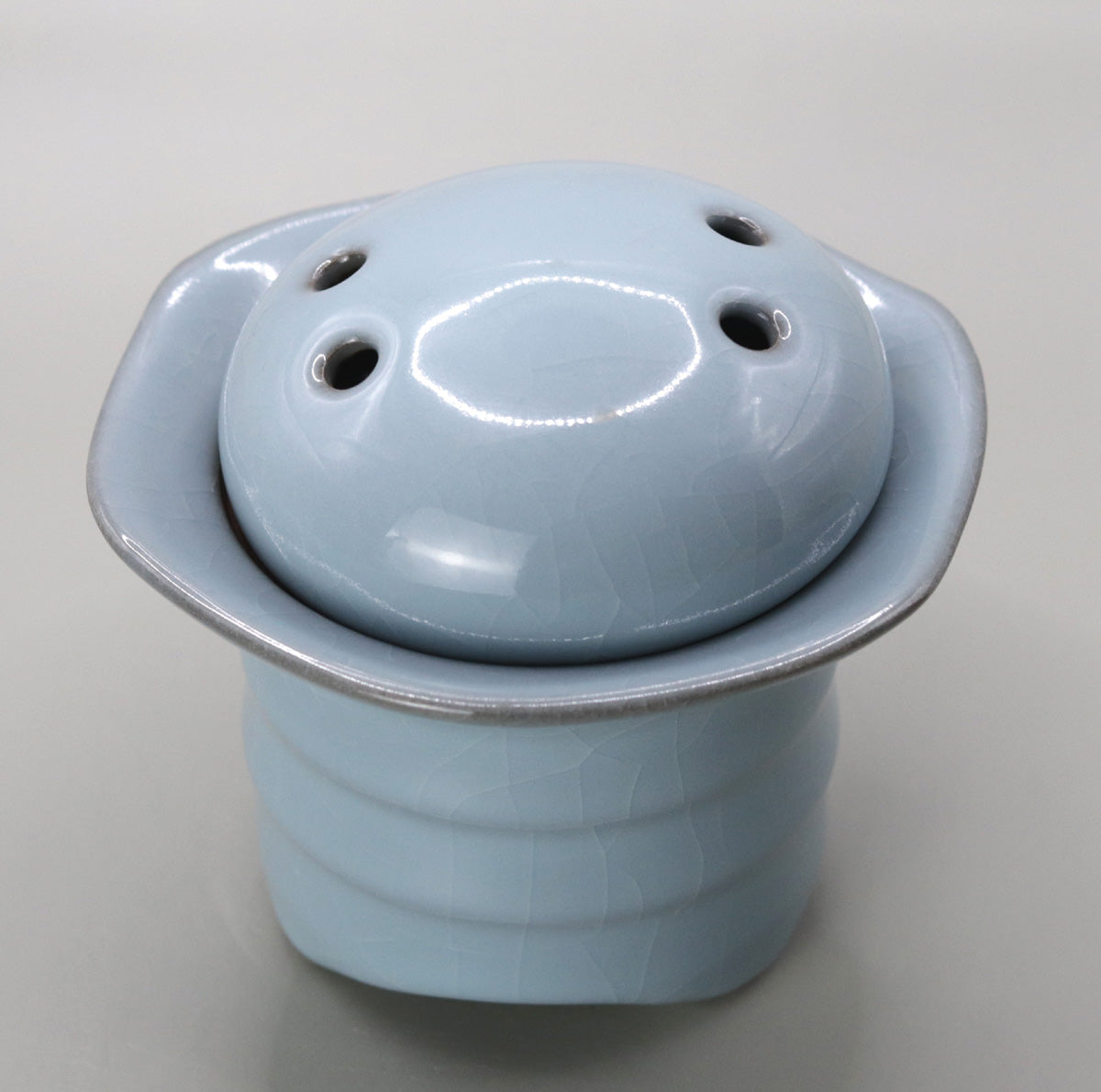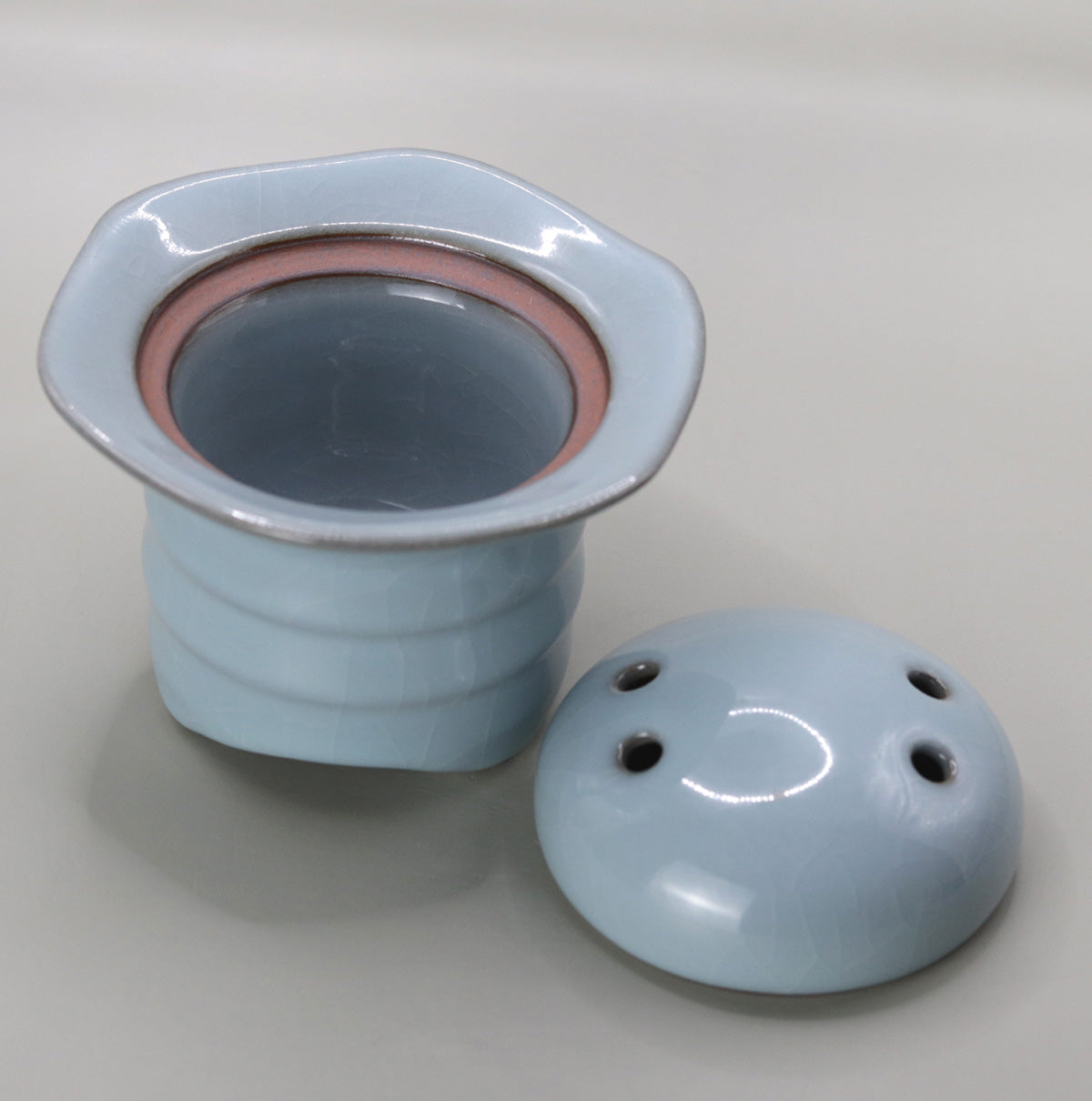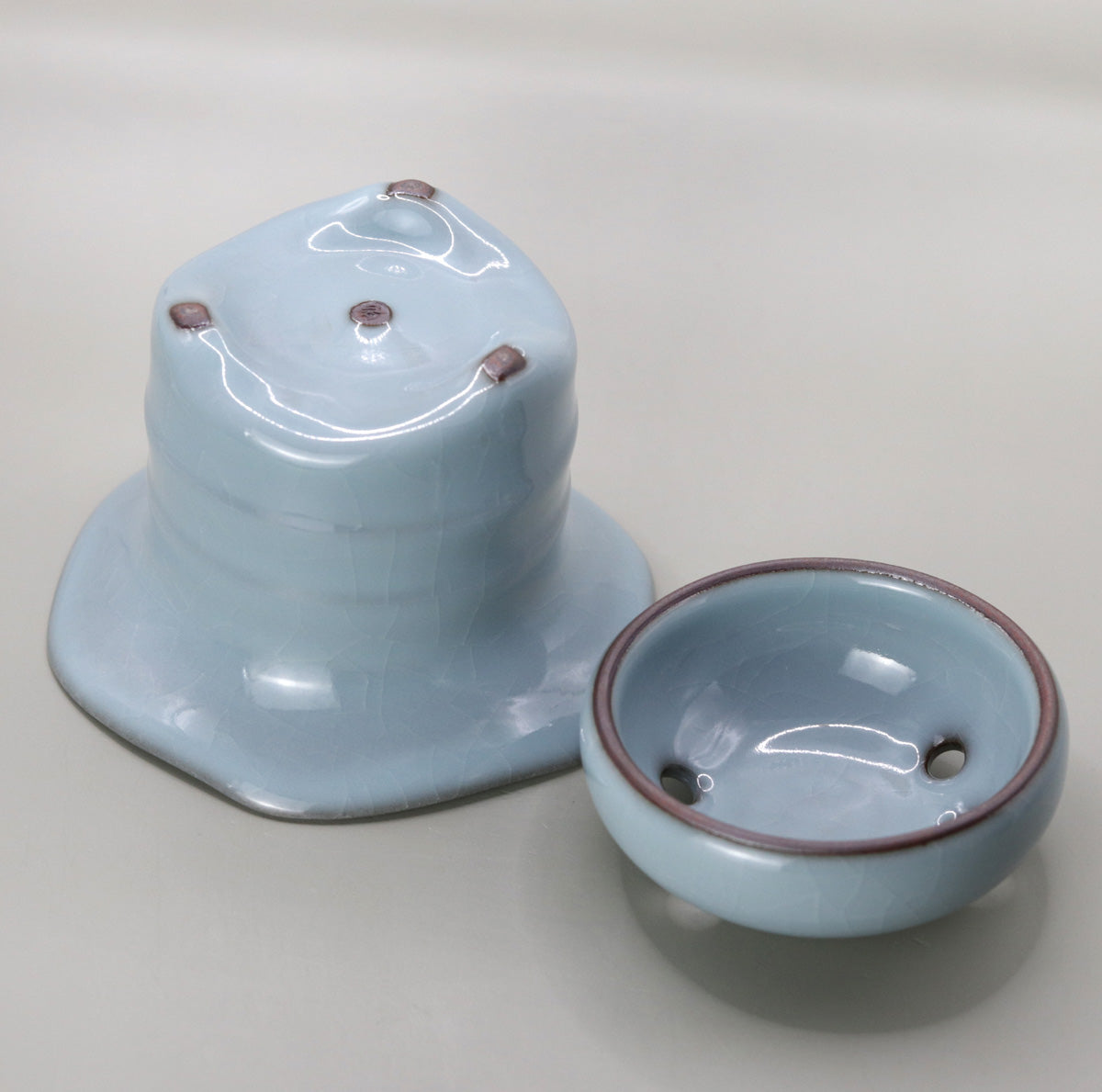Blue porcelain incense burner Masao Tagai
Blue porcelain incense burner Masao Tagai
Couldn't load pickup availability
Width: 14.4cm x 13.8cm Height: 12.5cm
Celadon incense burner ( made by Masao Tagai)
1. Work summary
This celadon incense burner is attractive for its pale "rain-filled blue" color, which seems to reflect the air after rain, and the ice cracks and crazing on both the lid and body. Tortoiseshell-shaped crazing runs evenly beneath the soft mirror-like luster, giving a subtle movement to the tranquil blue world. The top lid is plump and rounded like a bun, and three openwork holes that guide the incense smoke create just the right rhythm. The body is carved into stages to give it slight layers, and the bottom is carved on three sides to stand up like legs, achieving both a lightness and a sense of stability. The rim is a silver-gray "iron edge" made by applying a thin layer of glaze to bring out the iron color, giving the whole piece a sharp look.
2. Shape and design
| part | Shape characteristics | Aesthetic and functional effects |
|---|---|---|
| lid | Manju-shaped with three openwork holes | The incense smoke rises softly and catches the light, creating highlights. |
| Mouth rim | The tooth opens slightly outward, and the iron edge is exposed. | Stabilizes the incense case and adds contrast to the pale blue |
| Body | Cylindrical shape with three-tiered banded ridges | The glaze creates different shades and the texture changes to make it easier to hold. |
| hem | It is carved to look like a three-legged structure, and the base is made lower. | It allows heat to escape easily and creates a visually light, floating sensation. |
3. Technical features
Glaze design <br data-start="631" data-end="634">Masao Tagai keeps the iron powder content below 1%, and employs a "reduction drop" method in which the pottery is fired at a high temperature using reduction, and then switched to an oxidized finish only towards the end. This process produces a clear blue color without any reddish tinge, and the slight milky layer remaining inside gives the color a sense of depth.
Controlling Ice Crack Crazing <br data-start="771" data-end="774">By precisely adjusting the difference in the expansion coefficient between the clay and the glaze layer and gradually combining rapid and slow cooling, we create uniform cracking. With repeated use, the fragrance oils slowly soak into the piece, allowing you to enjoy the "growing scenery" of the crack patterns as they take on a hazy appearance.
Mirror Finish <br data-start="891" data-end="894">After firing, the piece is re-fired at a low temperature using reduction heating, which re-melts only the surface layer of the glaze, creating a moist luster that softly reflects light.
4. Historical and cultural background
Incense burners are essential tools for Buddhist ceremonies and incense-smelling ceremonies, and Chinese celadon incense burners were highly valued in Japan from the Muromachi period onwards. In particular, the pale blue and iron rim of Longquan ware resonates with the aesthetic sense of wabi-cha tea, and has been treasured as a scene symbolizing "purity" and "mysteriousness". While this piece is based on such classics, the addition of stepped carvings and a three-legged design gives it a lightness that stands out in modern spaces.
5. Tips for use and appreciation
Contrast of incense smoke and light <br data-start="1183" data-end="1186">The white incense smoke rising from the three open holes flickers against the pale blue glaze surface, creating a refreshing sensation for both the sight and the smell.
The iron rim and iron legs give it a refined feel . The faint silver-grey color of the rim and legs will develop a black luster over the years of use, further deepening the contrast with the blue.
Changes in the crazing over time <br data-start="1326" data-end="1329">The oils and heat from the incense cause the cracks to gradually change color, and over time they develop into a hazy pattern.
6. Conclusion
Masao Tagai's celadon incense burner is a vessel of "stillness and movement" with its clear blue color, ice cracks, and light design with a stepped body and three-legged legs. Just by burning a piece of incense wood, the space is purified, and the shadows created by the faint smoke highlight the depth of the blue glaze. Please enjoy the process of the crazing growing over time and the iron rim gaining luster for many years to come.
Share
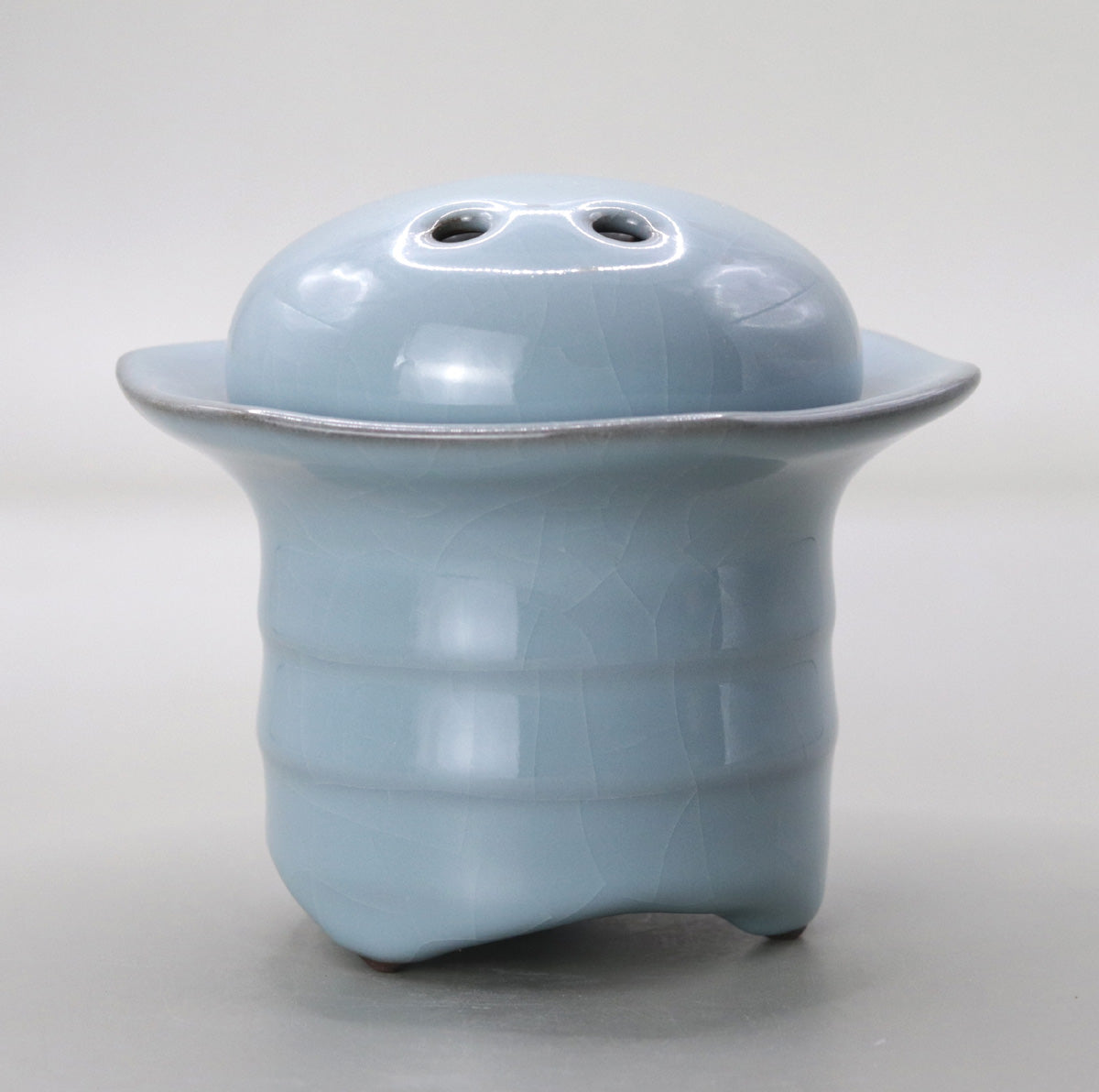
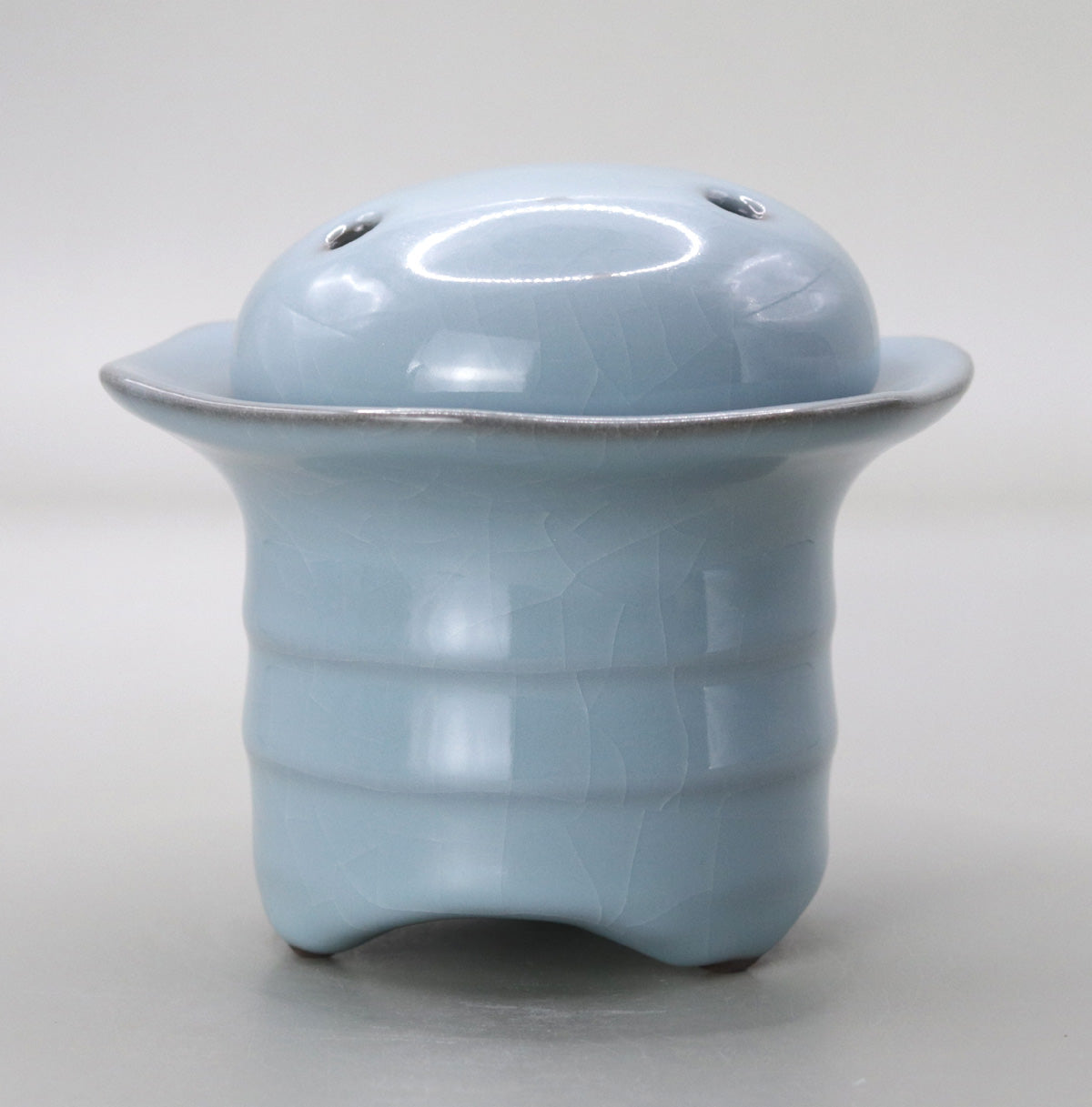
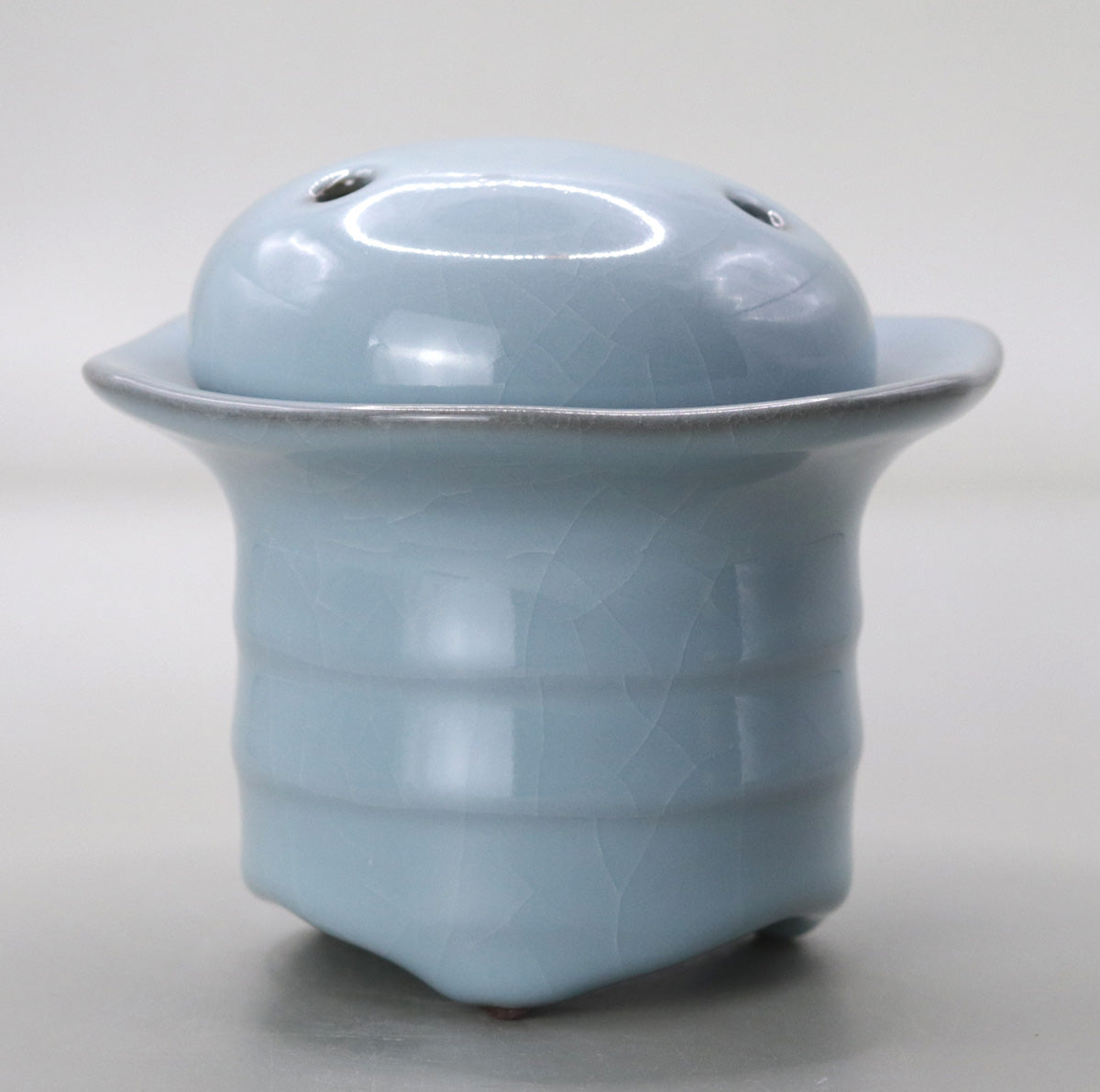
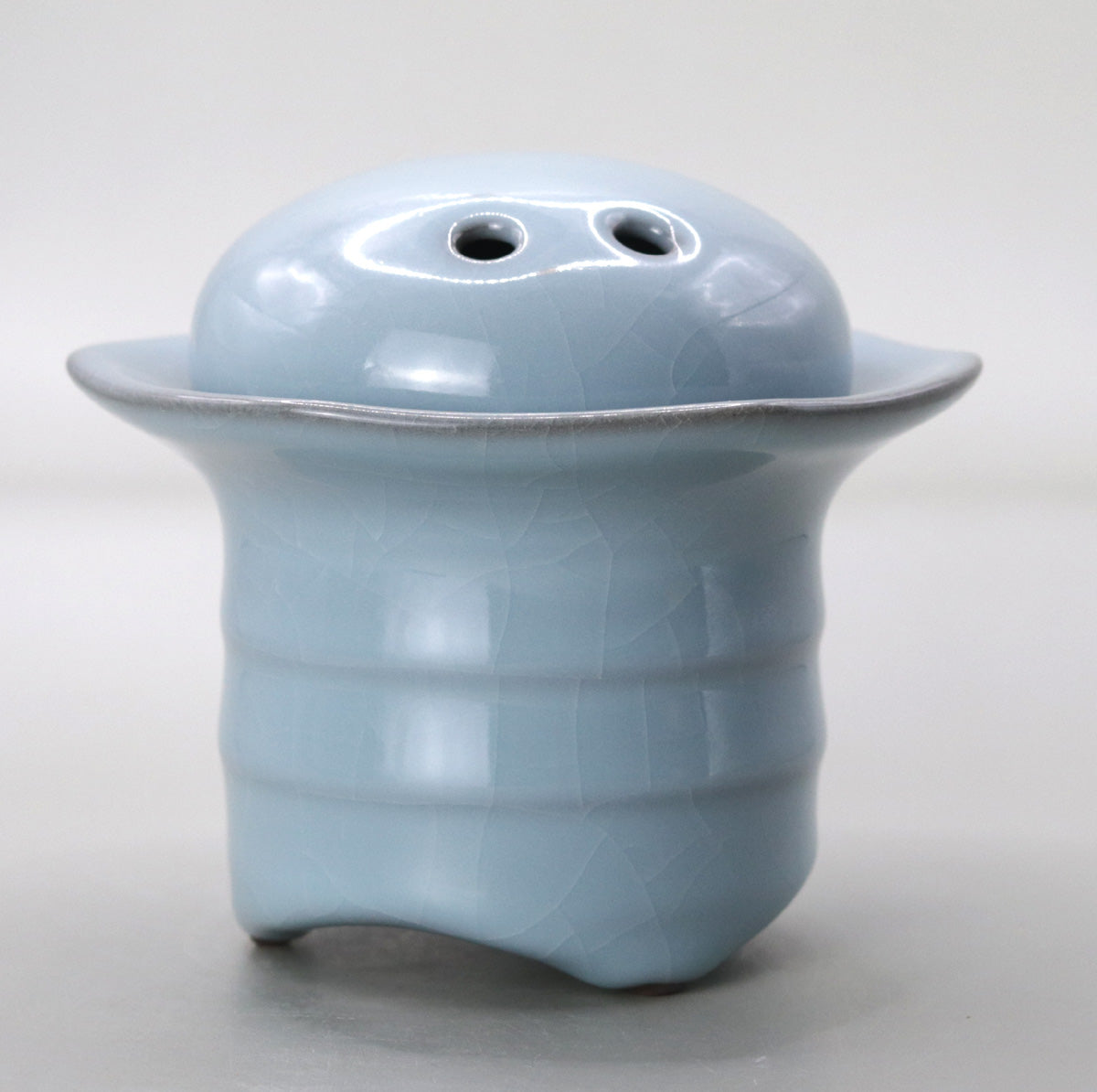
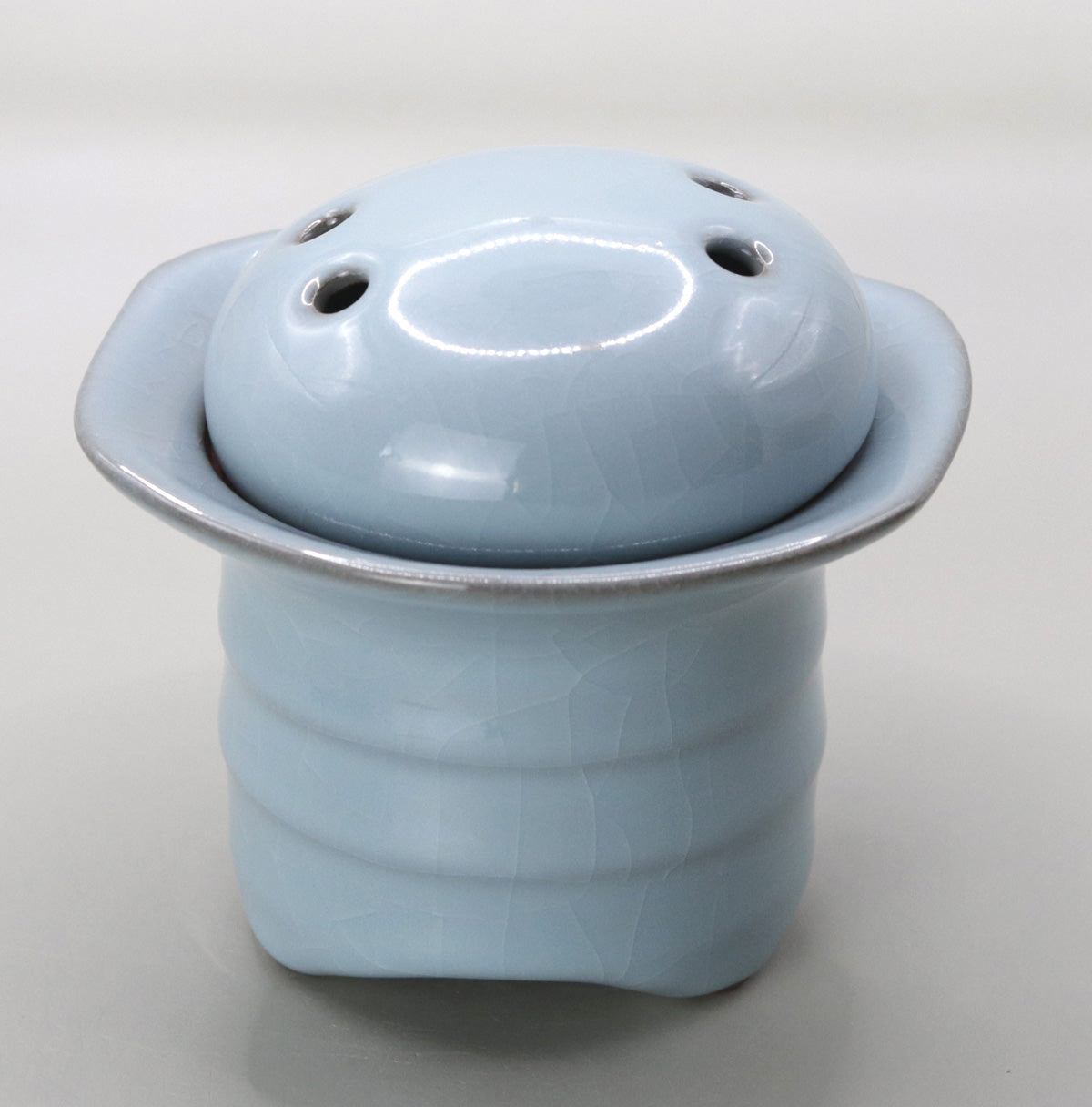
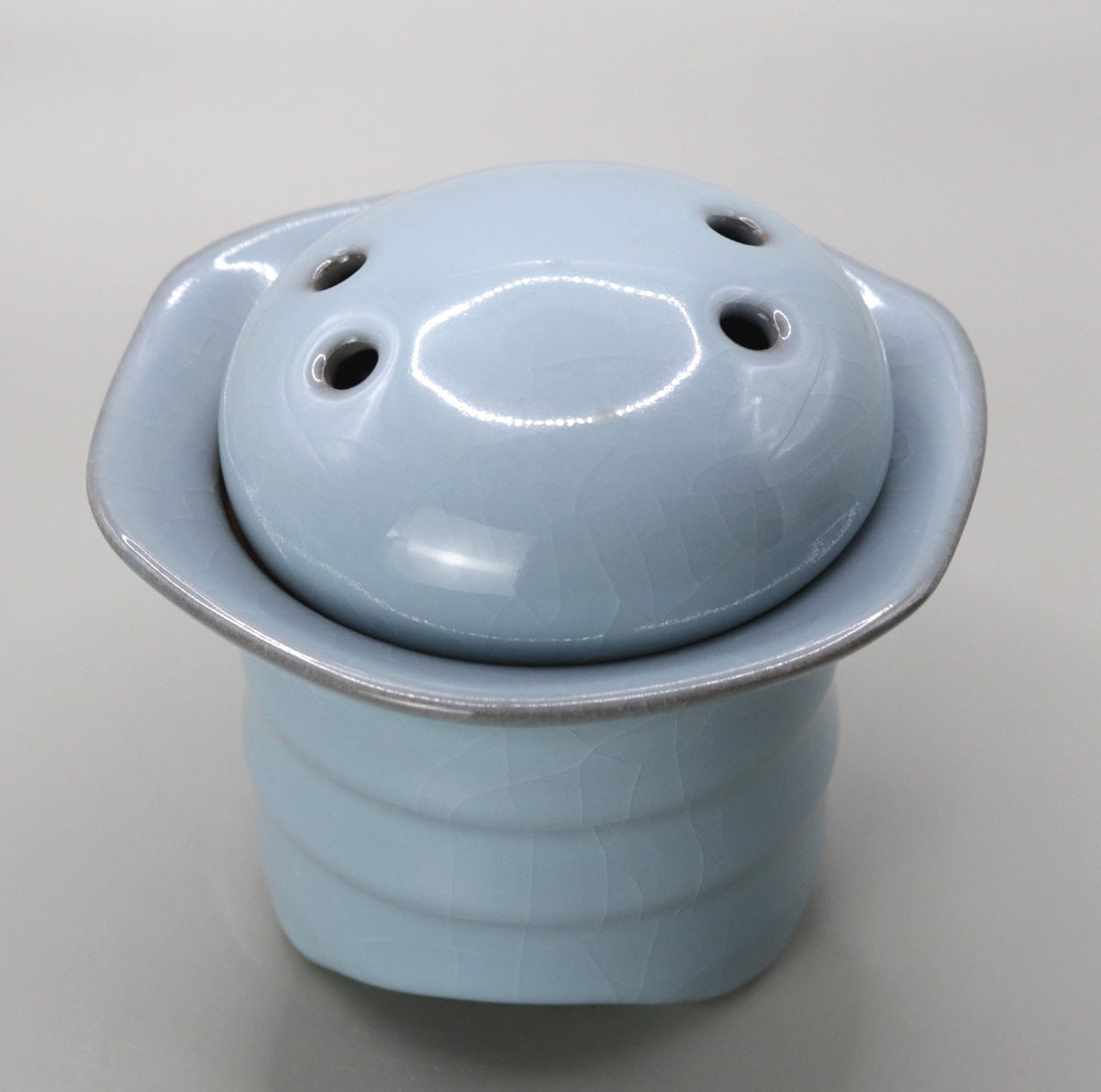
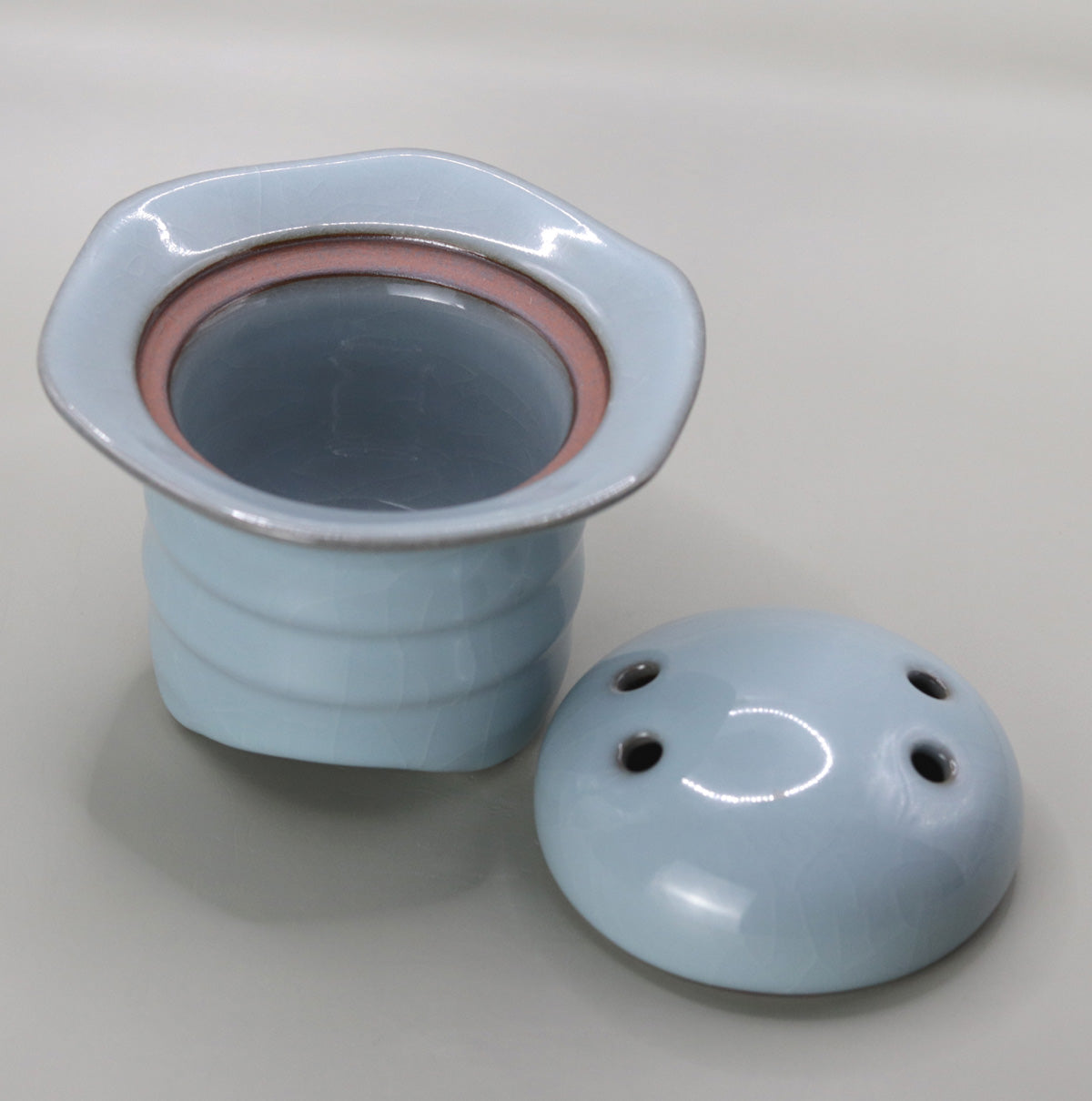
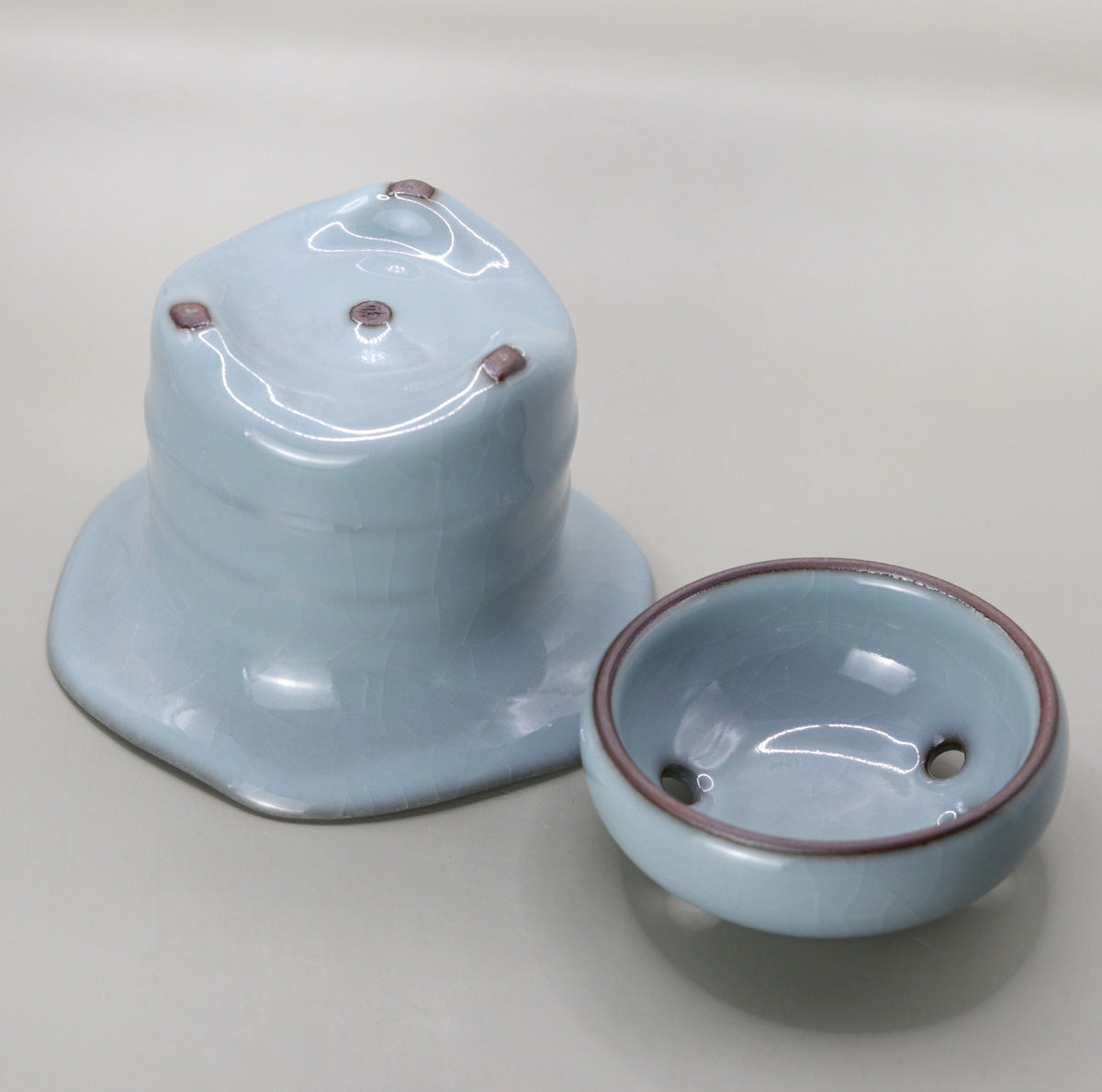
Multi-Column
-
[I will send it to you quickly and carefully]
We carefully package each product in a way that suits it best.
Also, delivery times vary depending on the piece (vessel, etc.).
Items that already come with a box will be shipped within 1-3 days of the order date.
For items that require a box to be made after your order, it will take approximately 30 days for production to be completed and then shipped.
In either case, once we have confirmed your order, we will contact you by email to inform you of the delivery date.
-
[Requests when purchasing pottery]
Even products that look the same may differ slightly in color, shape, size, etc.
The way the glaze is used, the power of the kiln, the firing method, the season, and the humidity also affect the appearance of the pottery.
Please understand the individuality of each piece of pottery and enjoy the unique warmth of handmade.

